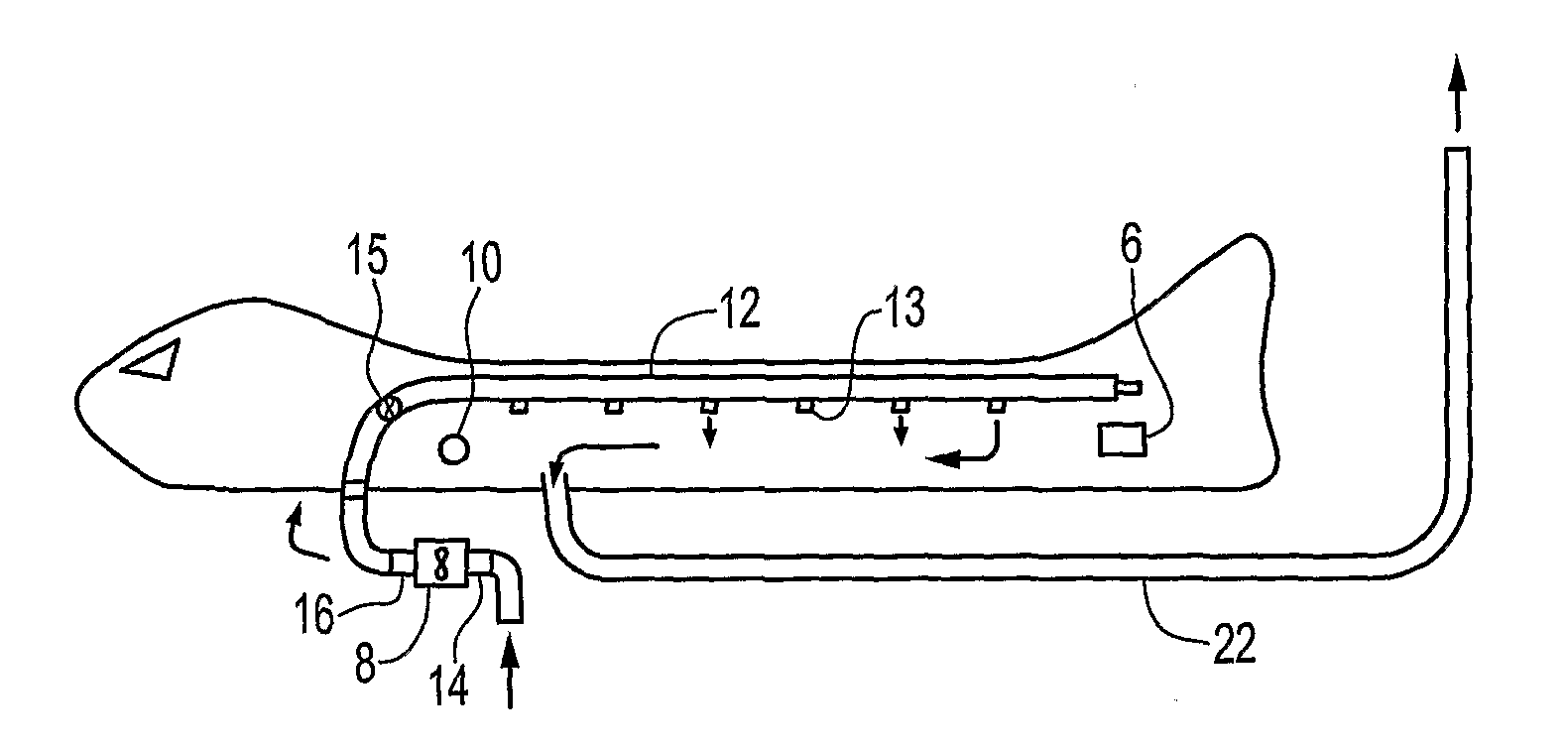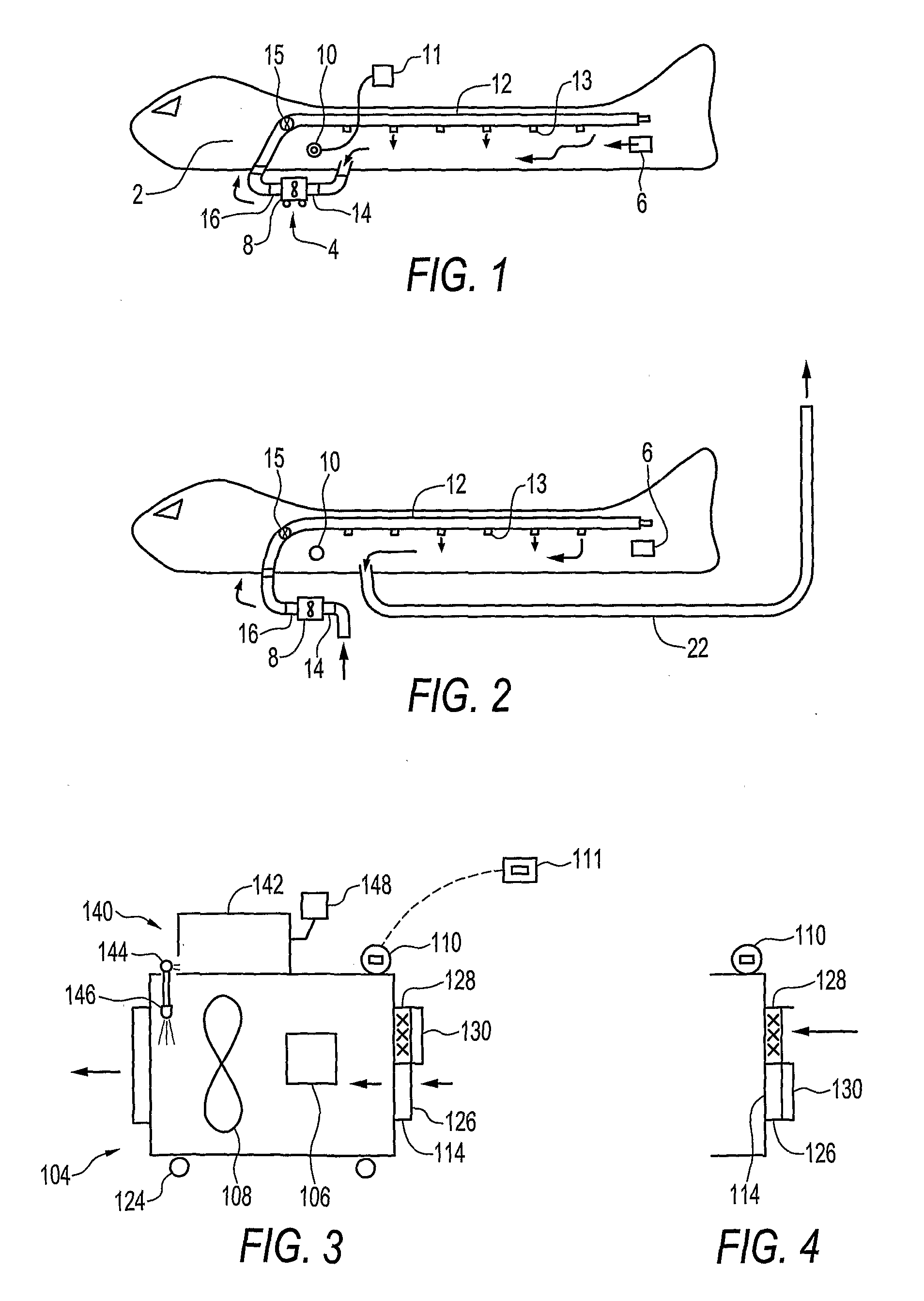Sanitization of aircraft or vehicle cabin
a technology for aircraft and cabins, applied in the direction of disinfection, lavatory sanitation, air-treating devices, etc., can solve the problems of difficult access for cleaning and sanitation, difficulty in sanitizing using conventional methods, and difficulty in ensuring cleanliness and sanitation, so as to reduce the concentration of ozone in the atmosphere
- Summary
- Abstract
- Description
- Claims
- Application Information
AI Technical Summary
Benefits of technology
Problems solved by technology
Method used
Image
Examples
Embodiment Construction
[0021]FIG. 1 schematically illustrates an aircraft passenger cabin 2 connected to an ozone sanitizing apparatus 4 of the invention set up to add ozone to the atmosphere inside the aircraft passenger cabin 2, and circulate the ozone rich atmosphere through the cabin 2. The sanitizing apparatus 4 comprises an ozone generator 6, a blower 8, and an ozone concentration sensor 10. Typically an oxygen concentrator will be incorporated into the ozone generator 6 to maximize the ozone generated.
[0022]People, and any desirable animals or the like, are excluded from the passenger cabin and the passenger cabin 2 is sealed in the same manner as such cabins are sealed for operation at high altitude so that air is prevented from exiting the passenger cabin 2. The blower 8 is connected to the air circulation system 12 of the aircraft. The circulation system 12 typically comprises a fan 15 to circulate air through ducts with outlets 13 spread out through the cabin 2. The blower 8 is connected at an ...
PUM
| Property | Measurement | Unit |
|---|---|---|
| Fraction | aaaaa | aaaaa |
| Time | aaaaa | aaaaa |
| Concentration | aaaaa | aaaaa |
Abstract
Description
Claims
Application Information
 Login to View More
Login to View More - R&D
- Intellectual Property
- Life Sciences
- Materials
- Tech Scout
- Unparalleled Data Quality
- Higher Quality Content
- 60% Fewer Hallucinations
Browse by: Latest US Patents, China's latest patents, Technical Efficacy Thesaurus, Application Domain, Technology Topic, Popular Technical Reports.
© 2025 PatSnap. All rights reserved.Legal|Privacy policy|Modern Slavery Act Transparency Statement|Sitemap|About US| Contact US: help@patsnap.com


